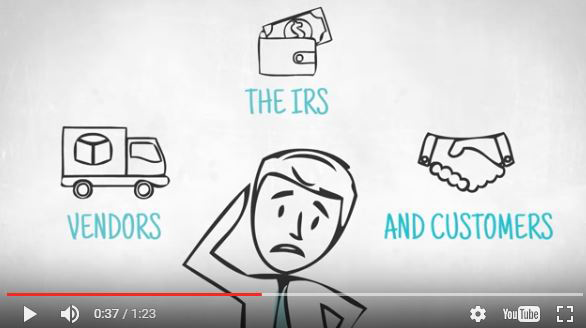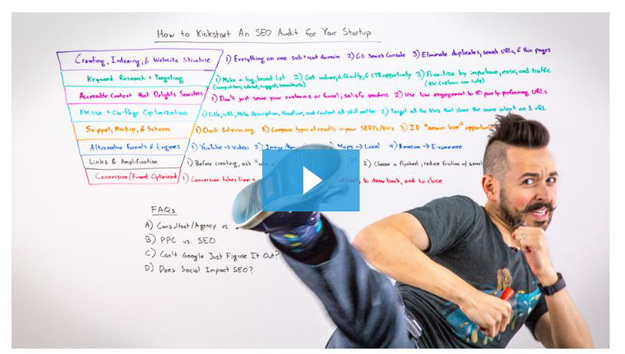Easy Videos for Your Business to Make

If your company is creating content in the form of blogs know that 55 percent of visitors only read your articles for less than 15 seconds (perhaps even less since that stat was reported).
Also know that this small window of attention has led writers to use tactics such as listicles, headers, images, infographics, and other ways to present blocks of text in a more engaging way and one that is conducive to those who scan an article for key points related to them. What many marketers are finding is that video offers a different level of engagement for their target audience because they are often "watched" while multitasking or as a way to get information faster. This is especially true of busy executives who report a preference for video over text, which makes sense considering the multitasking element. What this should tell companies marketing to this group and others, is to start (now) creating videos from scratch or repackage existing content into videos.
Still here? Great. Let's explore some easy videos for your business to make (even today).
The "Explainer" & "Whiteboard" Video
Explainer videos (animated drawings with voiceovers that can be created on the cheap) and, very similarly, "whiteboard" videos (a person stands in front of a whiteboard and uses it to explain a concept) are a trendy way of presenting information in a minimalistic way. Explainer videos are often found in place of "hero" images on homepages as well as included in blogs.
Moz Co-Founder Rand Fishkin, for example, hosts wildly popular "Whiteboard Friday" videos where he shares often complex information in an easy-to-follow yet comprehensive manner - all while drawing on a whiteboard. Like Fishkin, brands will want to include the transcript of lengthier videos so that there is a text version to be crawled by the search engines (to add to the SEO value that videos already provide).
For companies interested in creating explainer videos, check out the following resources:
+ Choosing the Right Explainer Video
+ Create an Explainer Video with These Solutions
The "Live" Video
It can be nerve-wracking to go live on a brand's social media page (whether it's Instagram stories, Facebook Live or Periscope) but that's what makes it so appealing to viewers - that live videos are unfiltered. Live videos are universally accessible for brands thanks to mobile devices and have been known to increase organic reach on Facebook, in particular, as the social network reportedly prioritizes Live content in its algorithms with some Pages even enjoying a 34 percent organic reach on the videos they are posting. What are your options for going live? Anything, really. A company party, a conference, a presentation or any other gathering can make for an effective live video. Similarly, brands are creating and posting tutorials in real-time.

The "Hangouts on Air" Video
If a company has people who create articles, infographics, social media posts, whitepapers or any other form of content, then they have people who can talk about that very same content on video. For those familiar with the process, people used to be able to host a Google Hangout within their gmail dashboard and record it from there. Now, once they set up YouTube Live streaming on YouTube.com (it requires verifying an account through a call or text), hosts can invite participants using Google Hangouts (see image), just like before but now just directly on YouTube (with a little fumbling around to figure it out). Inviting other participants often helps hosts relax a little more as the pressure is not all on them, and they can bounce ideas back and forth with people they know and respect. The video can be streamed live, saved and promoted wherever the person wishes. Video creators should remember to set up "cards" so that a link is included within the video (back to a conversion point like a website, contact form, whitepaper download, etc.), encourage viewers to use live chat during the video, check the included analytics to see how to improve and, finally, promote the video on appropriate channels.

The "Recap" Video
Using just a webcam, people can recap presentations (like this example shown below and hosted here) to encourage further action. Recaps can be done for events, articles and the list goes on. Similarly, using a webcam and hosting to YouTube is the easiest way to create videos for anything such as tutorials, how-to advice, interviews, etc. Everyone's an expert at something, so identify those people within an organization and put them on camera.
Shine Bright!
Videos are intimidating for most because it makes people vulnerable whether they are uncomfortable in front of the camera, nervous about feedback or not sure if they can quickly answer incoming questions that some formats support. It's best to choose a subject you're familiar with, practice off camera, write up a quick transcript (that you don't read verbatim but know the basics of) and keep videos as short as possible. Practice with video creation doesn't make perfect but it certainly makes people feel more comfortable and start to build on their skills each time. The only way to get better, however, is to start now and not to worry about how you look or sound on video (you'd be in the small minority if you liked either) - and the benefits of doing so will quickly follow.

Subscribe to Our Newsletter!
Latest in Social Media













